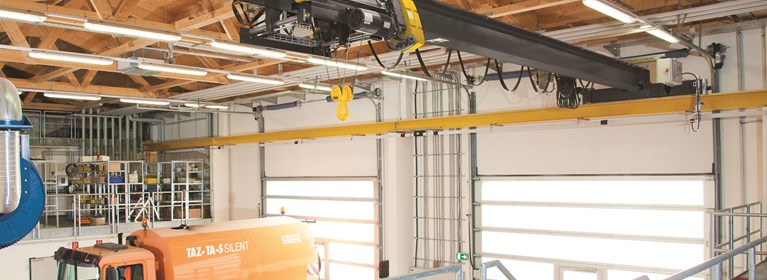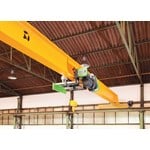Overhead Crane Types: What’s Best for Your Application?
There are five different types of overhead cranes. We’ll define each and how to choose the right one for your application.
Crane Systems |
How To's |
Hoisting & Lifting Equipment |
By Columbus McKinnon |
Apr 30, 2021
When choosing a crane for your application, it’s important to understand the different types of cranes available and the features and benefits they provide. Once you have that information, you’ll be able to make the best decision to meet your needs, taking into consideration crane class, space requirements, and your budget.
In this blog, we’ll walk through the benefits and use cases for all five types of overhead cranes along with different configurations that are available.
Here are the five basic crane types:
- Bridge Cranes
- Single Girder and Double Girder
- Top Running and Underhung
- Gantry Cranes
- Monorail Cranes
- Jib Cranes
- Workstation Cranes
Bridge Cranes
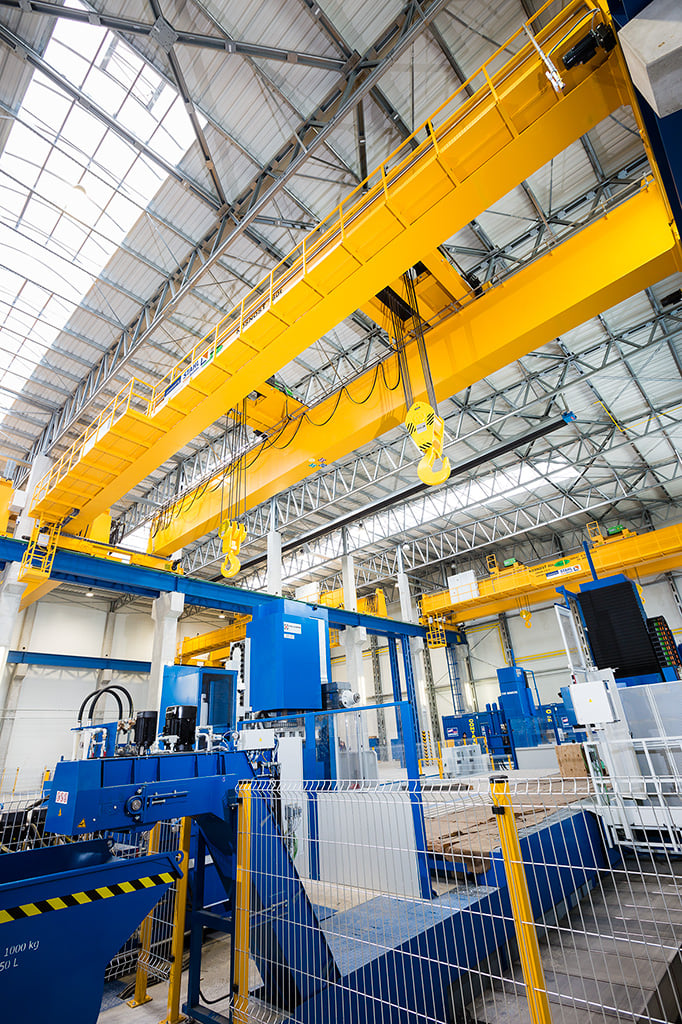
Bridge cranes are comprised of a bridge with two parallel runways connected by a traveling bridge girder. The two runways are supported by fixed columns, and the bridge travels on runways with end trucks on each side. Bridge cranes are frequently used in industrial environments and can have the highest lifting capacity of any overhead crane. Bridge crane configurations include:
Single girder vs. double girder
- Single-girder bridge cranes consist of one girder bridge traveling along each runway supported by an end truck. The trolley and hoist are commonly underhung in this configuration. Single-girder bridge cranes are best suited for capacities up to 15 tons and spans up to 65 feet.
- Double-girder bridge cranes are comprised of two girders traversing the runways supported on each side by an end truck. The trolley and hoist can either be top running or underhung. Double-girder bridge cranes are ideal for applications with capacities over 15 tons, high duty cycles, and spans exceeding 65 feet.
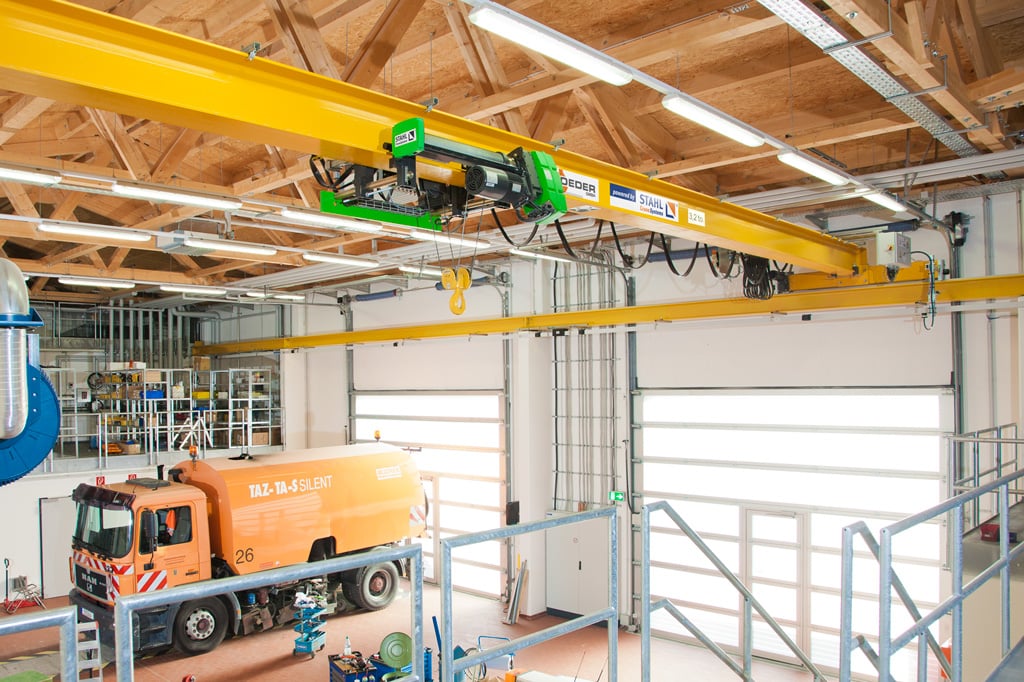
Top running vs. underhung
This refers to the area on the bridge where the trolley and hoist system is placed and operates.
- Top-running configurations are ideal for lifting extremely heavy loads because the trolley and hoist are supported by the runway support columns.
- In an underhung configuration, the trolley and hoist are connected and run along the lower flange of the bridge. Underhung trolley and hoist configurations are a great way to maximize space in your facility.
Gantry Cranes
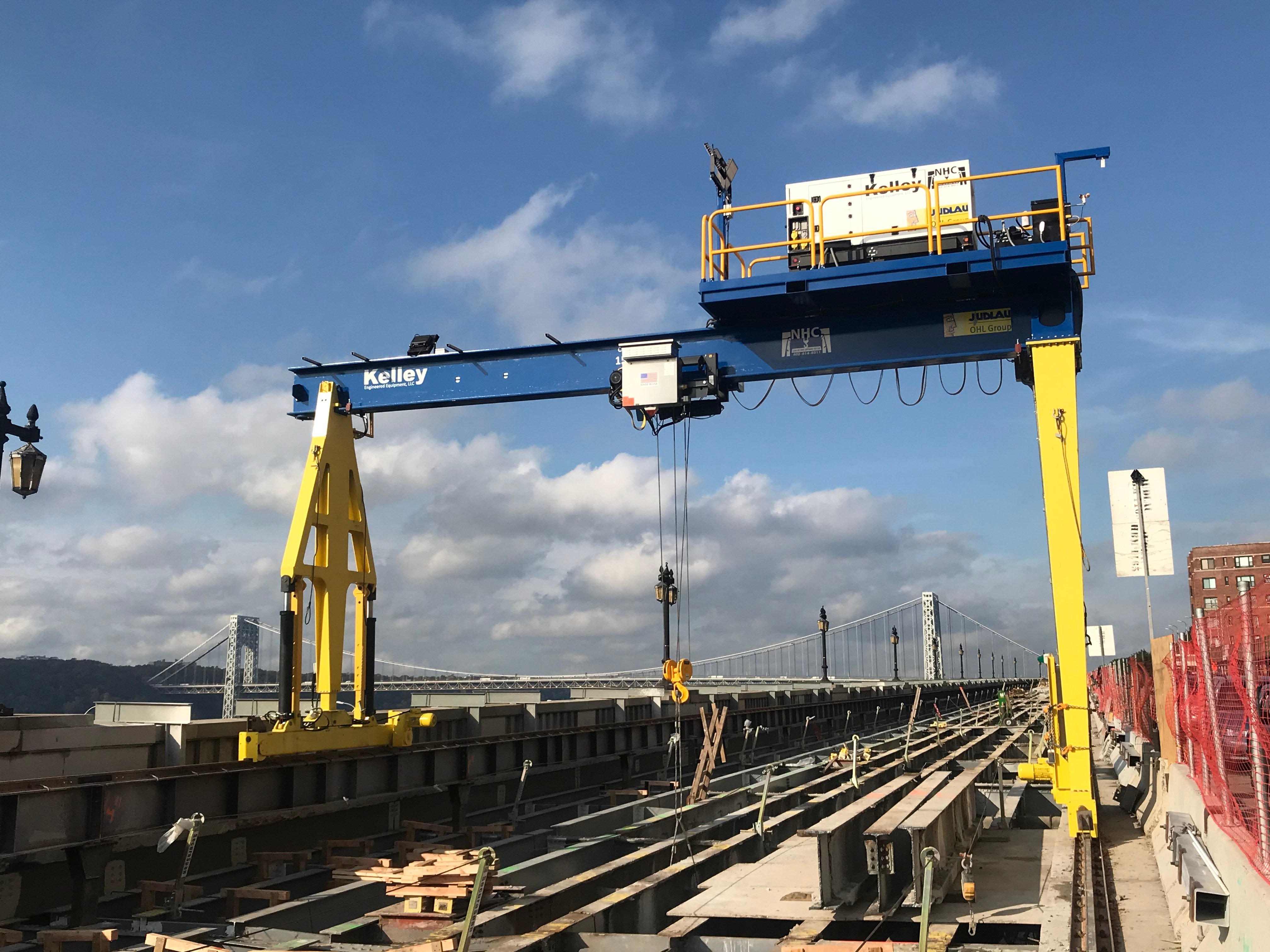
With gantry cranes, the trolley and hoist system still traverse along a bridge, but they are supported by legs rather than runways. This makes them ideal for outdoor applications where columns can’t be installed. For example, in shipyards or railyards fixed- or track-mounted gantry cranes are commonly used for those applications.
Gantry cranes are versatile and available in adjustable and portable designs. Gantry cranes are also useful when lifting is not frequently required, such as in a motor repair or body shop.
Monorail Cranes
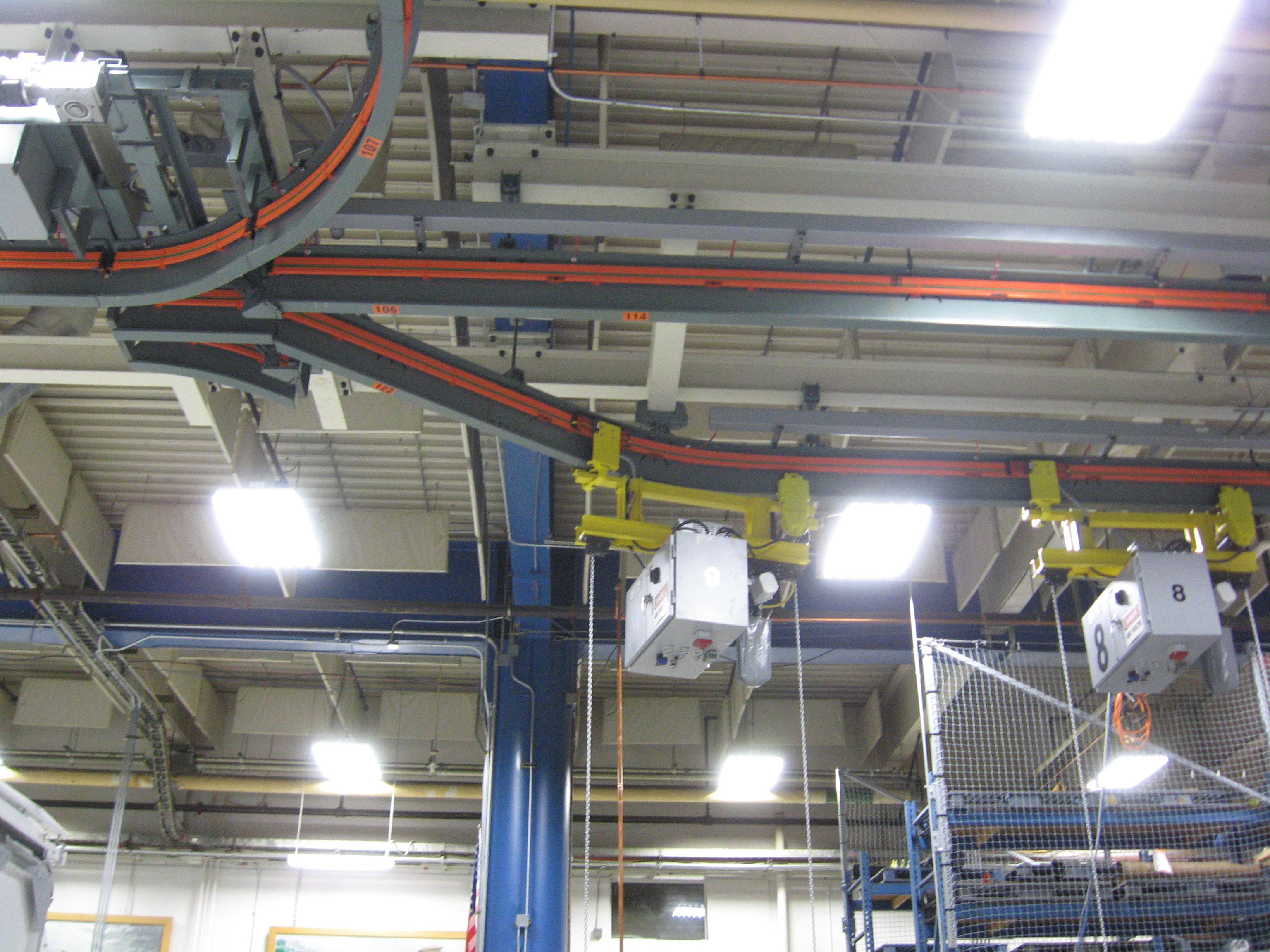
Monorail cranes are well suited for production and assembly line environments. With these cranes, the trolley and hoist are connected to an I-beam, running along the bottom flange. Monorail cranes typically move in a straight line but can be customized to meet specific applications, like this automated bus assembly monorail system.
Jib Cranes
Jib cranes are ideal for areas where adequate headroom and structural support does not exist, offering versatile and cost-effective solutions for your lifting needs. They cannot move around a facility, so jib cranes have limited movement, but can be used as supplements to regular traveling cranes and monorail tracks. They can also be used in bays and along the walls or sides of shops. Either mounted to the floor or a wall, jib cranes offer 180- or 360-degree movement.
Workstation Cranes
Workstation cranes offer an ergonomic and user-friendly design for lightweight applications (up to 2 tons) and repetitive tasks. Available in a multitude of sizes and lifting capacities, workstation cranes can be configured as over-hung systems or freestanding structures in your facility. Unified Industries’ ProPath Workstation Crane, for example, combines industry-leading enclosed track aluminum rails with smart material handling solutions to help increase the safety, uptime, and productivity in your facility.
Related Articles
Having a better understanding of overhead crane classes can help ensure you select the right crane for your application and save you from paying for components you do not need. Two cranes could offer the same lifting capacity, but, if one has a higher crane duty classification, the cost of specialized crane components can add up quick.
How To's |
Safety and Training |
Apr 16, 2021
North America - EN




